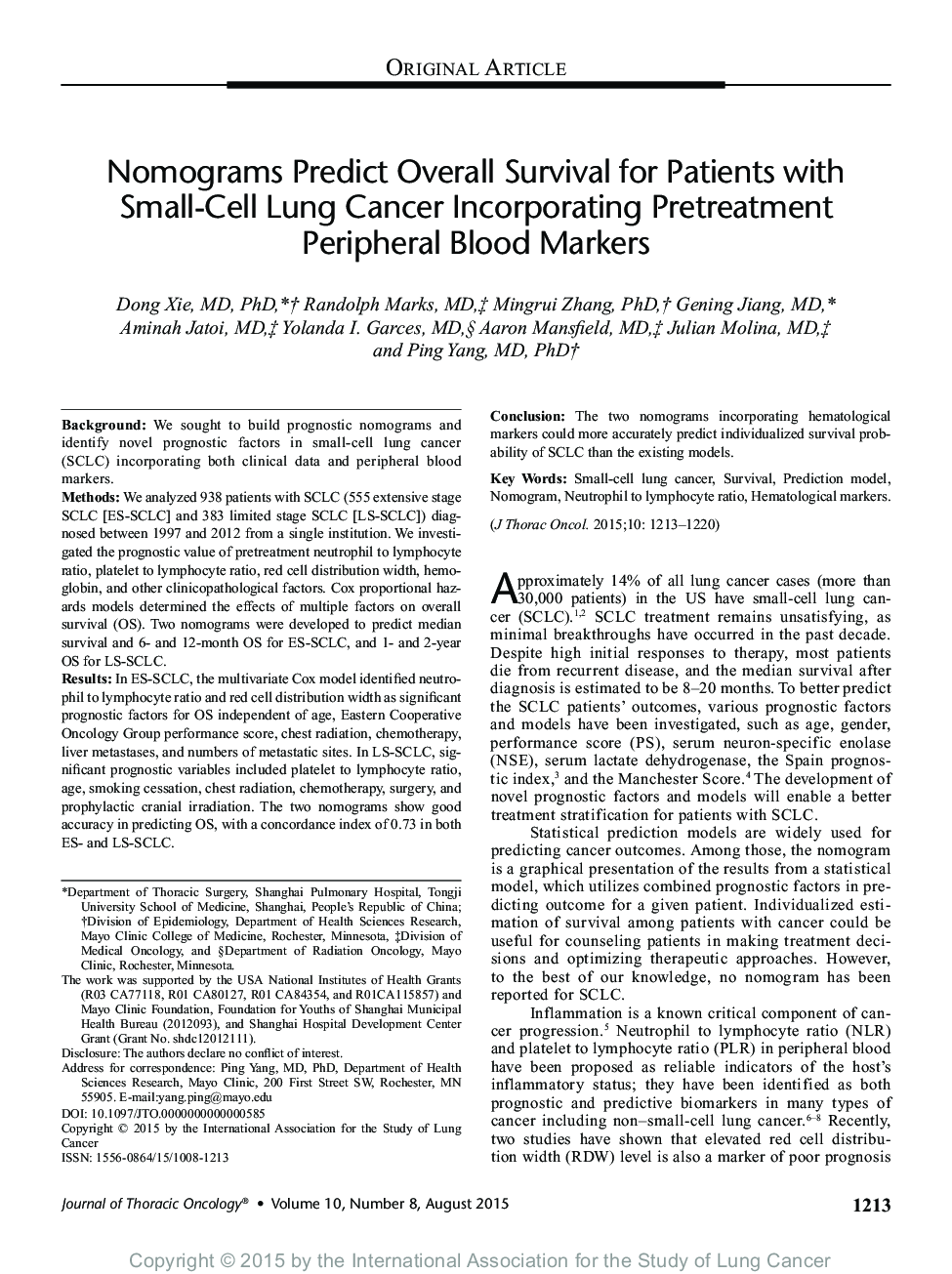| Article ID | Journal | Published Year | Pages | File Type |
|---|---|---|---|---|
| 6193026 | Journal of Thoracic Oncology | 2015 | 8 Pages |
Background:We sought to build prognostic nomograms and identify novel prognostic factors in small-cell lung cancer (SCLC) incorporating both clinical data and peripheral blood markers.Methods:We analyzed 938 patients with SCLC (555 extensive stage SCLC [ES-SCLC] and 383 limited stage SCLC [LS-SCLC]) diagnosed between 1997 and 2012 from a single institution. We investigated the prognostic value of pretreatment neutrophil to lymphocyte ratio, platelet to lymphocyte ratio, red cell distribution width, hemoglobin, and other clinicopathological factors. Cox proportional hazards models determined the effects of multiple factors on overall survival (OS). Two nomograms were developed to predict median survival and 6- and 12-month OS for ES-SCLC, and 1- and 2-year OS for LS-SCLC.Results:In ES-SCLC, the multivariate Cox model identified neutrophil to lymphocyte ratio and red cell distribution width as significant prognostic factors for OS independent of age, Eastern Cooperative Oncology Group performance score, chest radiation, chemotherapy, liver metastases, and numbers of metastatic sites. In LS-SCLC, significant prognostic variables included platelet to lymphocyte ratio, age, smoking cessation, chest radiation, chemotherapy, surgery, and prophylactic cranial irradiation. The two nomograms show good accuracy in predicting OS, with a concordance index of 0.73 in both ES- and LS-SCLC.Conclusion:The two nomograms incorporating hematological markers could more accurately predict individualized survival probability of SCLC than the existing models.
